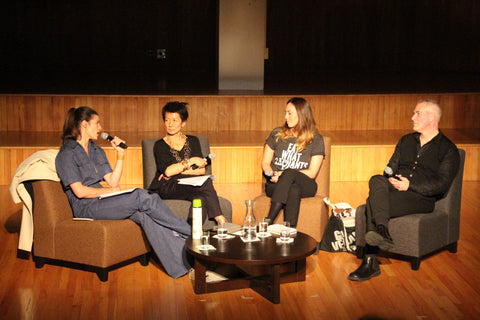Your cart is currently empty!

Origin of the term Slow Fashion is a term that originated as the antithesis to Fast Fashion, to describe the benefits of choosing quality over quantity or the disadvantages of sacrificing one over the other. It also questions the concept of time. The way we value it, the way we use it, the way we relate to it. In our current economical system, time is treated as a commodity just like many natural resources. We attach a currency or a premium to it. People get paid by the hour, we work full time, part time, over time. But how much of the other more important values get pushed aside in order to make more of that hour, or of that pay related to the hour? Examples: Workers that sheer sheep to produce wool are paid by the hour. So they try to sheer them as fast as they can and end up cutting their parts. We try to eat fast, and we fall in the conveniences of fast food, we don’t want to clean dishes so we use disposable plastics that pollute our water streams. Factories gets paid per piece so they make the operators sew garment as fast as possible, accidents and mistakes happen.
On one side it is effective because it motivates people to do more in a limited amount of time and it can push people to be more efficient BUT never at the expense of quality, workers treatment, ethics and the environment. Those are to be held as core values and not money.
Slow Fashion is about slowing down the manufacturing process, the scale, the rampant consumption. It is about craftsmanship, attention to the details, the art of hand sewing, contained waste production.
My foray into it happened when I was introduced to hand tailoring. I ceased to do volume production and started to offer custom made service where each piece is cut individually for a specific person. The decision to slow down was based on my personal belief that less is better, quality is much more important than quantity. I want my professional life to be representative of what I believe.
Look at the case of Gangster gardener Ron Finley from Central LA. He lives in probably the worst area in south LA and had to drive 45 minutes to get a fresh tomato, because the only options were fried, fattening processed food. He planted a vegetable garden in the curbside dirt strip in front of his house. A neighbor called the police on him and he got in trouble with the authorities because that neglected patch of dirt is owned by the city and he was cited for gardening without a permit. He fought back and hard with fellow activists and the city backed off.
Remember cheap is actually expensive. Cheap clothes are only made possible by exploitation of labour and natural resources. And it makes you buy more than what you need.
The Blueprint of SLOW FASHION is local manufacturing, handsewing, fair treatment of labor and ecological awareness. None of these components are unattainable or determined by how much money one has. You can buy second hand clothes that have been gently worn or not even worn at all. Especially considering that the average American doesn’t wear ¾ of the clothes they own. That is 75% of their closet!!! One can transform them into something else, something beautiful and unique. Find and nurture the designer in your family or community to do mending. You can open a cool second hand shops.


